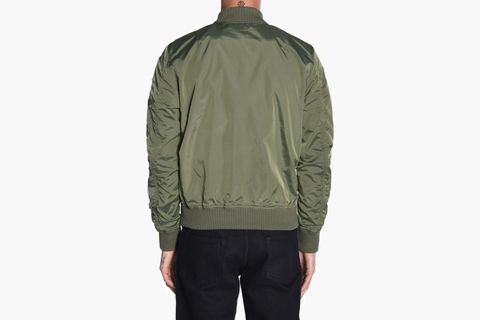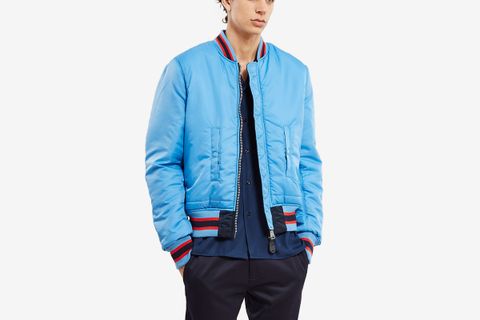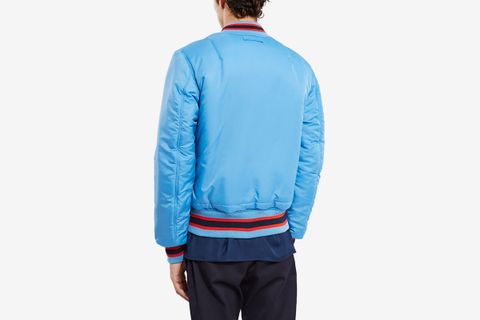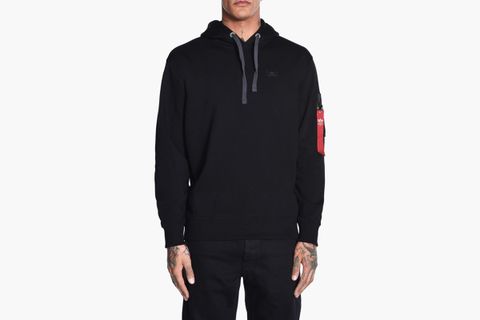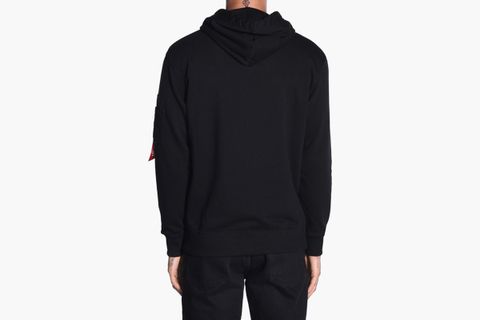
An outfitter to the U.S. armed forces since 1959, Alpha Industries has always toed the line between outerwear that performs well and garb that give an air of understated military elegance. The armed forces may be an unexpected place for people given a uniform to exhibit individual style—they’re all given the same standard-issue garms after all—but servicemen and women garb been tweaking and reworking their garments throughout history, resulting in pieces that not only reflect where they’ve served, but the personality beneath the uniform. Tapping into the rich history of self-expression behind souvenir “Sukajan” jackets and “World Tour” field coats, Alpha Industries pulls directly from the past to inform its fashion-focused Spring/Summer 2017 collection.
Souvenir Jackets & Sukajans
The history of the Sukajan begins with its more commonly used moniker: the souvenir jacket. These started out as literal souvenirs that American GIs would bring back home after serving in the Pacific Theater during and after World War II. While combat was centered across Asia, the port in the Japanese city of Yokosuka was a major hub for American servicemen during post-war occupation. As far as the jacket’s military influences, it wasn’t just the personnel that informed the Sukajan’s design: the silk and satin fabrics that we associate with souvenir jackets today were occasionally cut from excess parachute material. Local tailors in Yokosuka, catering to this sudden wave of new American shoppers, helped turn these custom keepsakes into a trans-Pacific fashion statement. Even the name “Sukajan” reflects the garment’s Yokosukan history. Some believe the name an amalgamation of “Sky Dragon Jumper” in Japanese, others believe it to be a rough mashup of the words “Yokosuka” and “jumper”. But this cultural cross-pollination is more than in the name. Combining American-friendly silhouettes like baseball jackets and MA-1s with hand-stitched traditional Japanese and Chinese symbols, the Sukajan was born.
As the 1960s came about, Japanese youth began to adopt Ivy League-esque American fashion from the ‘50s and ‘60s, bringing life to a subculture of “Ametora” (Japanese slang for “American traditional”). It was these kids—trading traditional Japanese fashion for American influences as a form of rebellion—who gave new life to souvenir jacket, turning what was once a keepsake into a defiant fashion statement. In this way, the souvenir jackets of today embody the garment’s history on two fronts. Shaped like traditional MA-1 flight jackets, they’re cut in much the same way they were over 50 years ago; fashioned with brightly embroidered details, they embody the individuality of the jacket’s owner.
World Tour Jackets
As American involvement in Asia increased in the late ‘60s and ‘70s via both the Korean and Vietnam Wars, so too did interest in souvenir jackets. However, unlike the custom-made Sukajans that rose to popularity following World War II, GIs were embroidering their own active-duty M-65 field coats. Akin to Sukajans, these tour jackets were embroidered with icons and maps that reflected where they served. In this period, the sentiments were often less influenced by East Asian art, opting for more literal icons (like maps and vehicles) or Western-style cartoons. These coats are often adorned with darker themes and anti-war slogans that reflected the mood of the times.
Again, as the rigidity of official Battle Dress Uniforms gave way to the flexibility of life in the field of duty. As utility uniforms became the norm due to their oversized silhouette (making them more comfortable to wear in the tropical climate of southeast Asia) and more durable construction (helping clothes work harder in the region’s harsher conditions), customization on the uniform itself was as much a signifier of personality as it was a physical reminder of where and when someone served. In the case of a literal “World Tour” coat, the regions and/or nations where a service member served adorn the coat, marking their globetrotting service.
For the armed services, a life in uniformed dress is all apart of the job description. But just because there’s a uniform doesn’t mean there’s room for self-expression and personality. As seen with the Sukajan souvenir jackets and World Tour coats, each serviceman and woman’s story is unique to them, something that crosses over into the equally individualized garments that they bring home after being stationed abroad. While the souvenir jackets and customized field coats you see on the sidewalk today might not have seen active duty, they embody a history of personal storytelling and style through clothing. It’s something that Alpha Industries—both as a military supplier and as a fashion-conscious contemporary label—has known since 1959.
Related Shopping Tips

